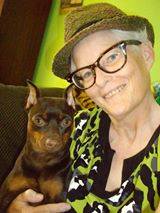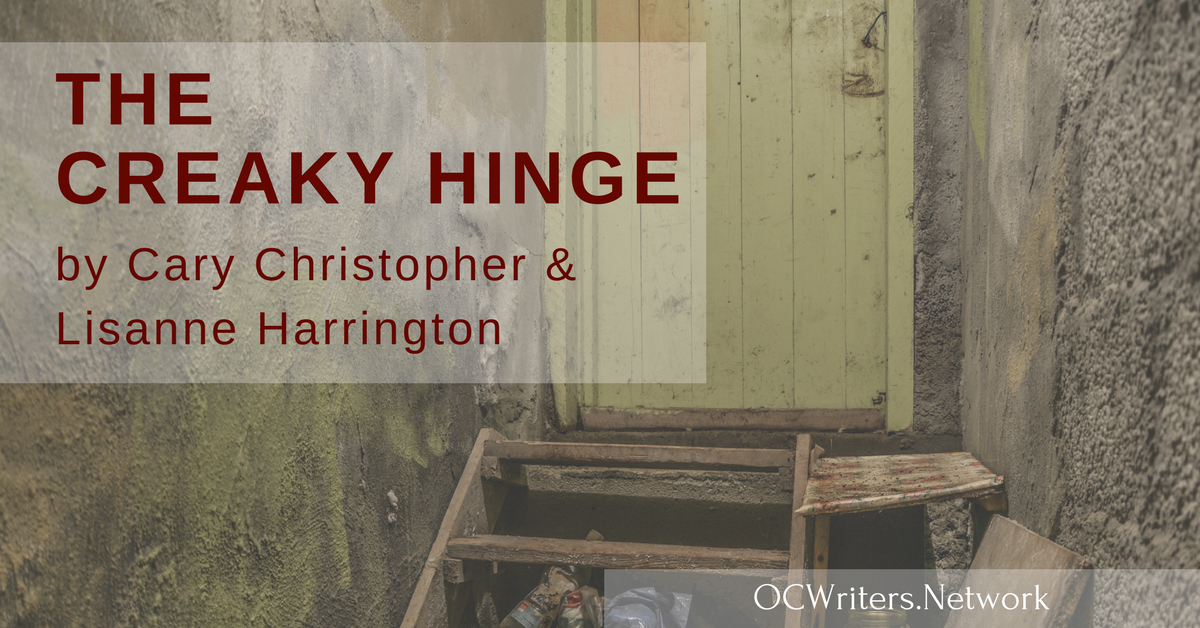by Lisanne Harrington and Cary Christopher
Believability.
Setting is an important element of any good story, but even more so in horror fiction. Readers of horror expect to be entertained by a suspenseful tale solidly anchored in a believable and familiar setting that seems normal on the surface but that can seamlessly blend the natural and supernatural. As author and editor Douglas E. Winter says, “an effective horror writer embraces the ordinary so that the extraordinary will be heightened.”
The best horror writers can make readers tremble with fear at vivid descriptions of a terrifying scene, scary character, or intense setting. Haven’t you ever been afraid to turn the page to find out what happens next in a good story, but yet, can’t not find out?
The thing we like best about horror is that it plays on the reader’s private fears, exploiting the frightened child within, who hopes the bogeyman isn’t lurking in his closet. It’s a common childhood fear that Stephen King takes full advantage of in The Mist, where townspeople are trapped in a supermarket when a fog filled with strange and terrifying creatures surrounds the store. Everyone goes to the market, so using a commonplace setting like this heightens the fear that nowhere is safe.
Above all else, what makes your setting truly frightening is believability. Whether you are describing the fantastic or the ordinary, the reader has to believe in it. Remember that old adage? You must ensure that readers are willing to suspend their disbelief in order for them to keep turning the page.
So how do you do that? We’re glad you asked. ☺
Reality.
That’s what will bring your story to life. Paint a scene that most people are familiar with, where they probably feel safe, and then add just a few sentences to show that maybe all isn’t what it seems, that there’s something not quite right about the place. It doesn’t have to be a lot—more isn’t always better—but rather, just enough to create unease in your reader.
Emotional Connection.
Human beings are an emotional lot. It’s how we connect to other people and to places. Everyone has preconceived notions about certain places. What do you think of when you hear a horror story is set in the deep South? We think of hot sweaty nights on the bayou with a backdrop of voodoo. Deserts can be sweltering during the day and bitter cold at night, with dry sand whipped by extreme winds. Granted, these are stereotypes, and we are not suggesting writers use boilerplate descriptions, but we are proposing that you remember that these emotional connections exist, and use them to your story’s advantage.
Traditional…Or not.
When deciding on your setting, you can go more traditional with cemeteries, haunted houses, or castles. These time-honored classics are custom-made to induce dread before you even bring in the supernatural. But fair warning: these locations are over-used, and therefore, it’s much harder to surprise or shock your reader when they know what’s coming next.
Take, for example, the way William Peter Blatty created a sinister element to an average suburban home in The Exorcist:
The house was a rental. Brooding. Tight. A brick colonial ripped by ivy in the Georgetown section of Washington, D.C. Across the street was a fringe of campus belonging to Georgetown University… Early on the morning of April 1, the house was quiet… At approximately 12:25 A.M., Chris glanced from her script with a frown of puzzlement. She heard rapping sounds. They were odd. Muffled. Profound. Rhythmically clustered. Alien code tapped out by a dead man.
In just a dozen words, he lets the reader know something bad is on the way. Efficient, effective, evocative.
Non-typical locations work especially well since there are few preconceived notions about supernatural goings-on in these places. Readers don’t go in knowing what’s going to happen next, so when the horrible and unexpected does happen, the shock value is greater and even more frightening.
Bentley Little, whom Stephen King calls “the horror poet laureate,” set The Consultant in an ordinary office building:
Craig frowned. Although he’d been up here many times, he had never seen this door before. How was that possible?…the door was conspicuously out of place. It was not supposed to be here…Already he had a bad feeling about this.
What makes the story unusual are the events that take place. No spoilers, but suffice it to say it mirrors today’s concerns about workplace violence.
Ray Bradbury uses a carnival, usually a happy place, to illicit terror in Something Wicked This Way Comes. Stephen King often uses small-town America as a backdrop for evil. These settings work especially well because most readers associate such places with good times and therefore don’t expect to meet evil there.
Don’t Forget About Time.
One last thing. Part of setting is the time of day. Don’t feel that you necessarily need to set your scary action only at night. Granted, if you’re writing a traditional vampire or werewolf story, this might be necessary. But it might not. In Lisanne’s Wolf Creek Mysteries, much of the terror actually takes place during the day. It depends on what works best. Just remember that you’ll have to work much harder to scare the crap out of your readers if you set the action at a time where they are expecting evil to occur than if it jumps out at them in the light of day.
By now, we hope you see how important setting is to your story. A good setting is one that is either completely unexpected, or ordinary with a twist. Setting should not be overlooked any more than the personality of your characters. In fact, it can be argued that setting should have just as much “personality” as a character.
So when writing your next bestseller, don’t rush your setting. Spend as much time as you need to get it just right so that it can provide all the terror and fear your readers deserve.
***
Cary Christopher was born and raised in Florida and Georgia but has called Southern California home now for almost 20 years. He’s written extensively about music, movies and pop culture online and for various publications around SoCal. Now he primarily writes for his blog (www.carychristopher.com). His new novel The Wash is available on Amazon.
Link to my Amazon Authors Page: https://www.amazon.com/Cary-Christopher/e/B076FD8MJ3
 After sixteen years as a paralegal, I staged a coup and left the straight-laced corporate world behind forever. I now pander to my muse, a sarcastic little so-and-so who delights in getting the voices in my head to either all speak at once in a cacophony of noise or to remain completely silent. Only copious amounts of Diet Cherry Dr. Peppers and hamburgers will ensure their complicity in filling my head with stories of serial killers, werewolves, and the things that live under your bed.
After sixteen years as a paralegal, I staged a coup and left the straight-laced corporate world behind forever. I now pander to my muse, a sarcastic little so-and-so who delights in getting the voices in my head to either all speak at once in a cacophony of noise or to remain completely silent. Only copious amounts of Diet Cherry Dr. Peppers and hamburgers will ensure their complicity in filling my head with stories of serial killers, werewolves, and the things that live under your bed.
I live in SoCal, in the small town I fashioned Moonspell’s Wolf Creek after, with my beloved husband and persistently rowdy, always-has-to-have-the-last-word Miniature Pinscher, Fiona.
*O.C. Writers is a participant in the Amazon Services LLC Associates Program, an affiliate advertising program designed to provide a means for us to earn fees by linking to Amazon.com and affiliated sites. By clicking on the book links anywhere on this site, we earn a small commission from your purchase.







The novel I’m trying to write is not a horror story, but I found something very helpful here: “Paint a scene that most people are familiar with…then add just a few sentences to show that maybe all isn’t what it seems…” Now I just have to figure out what to put in the apartment where Kate lives to show something is not quite right in her life! A million thoughts are going through my mind right now. Thank you both for this great article with advice that crosses genres.
We’re glad you found it helpful! Good luck!